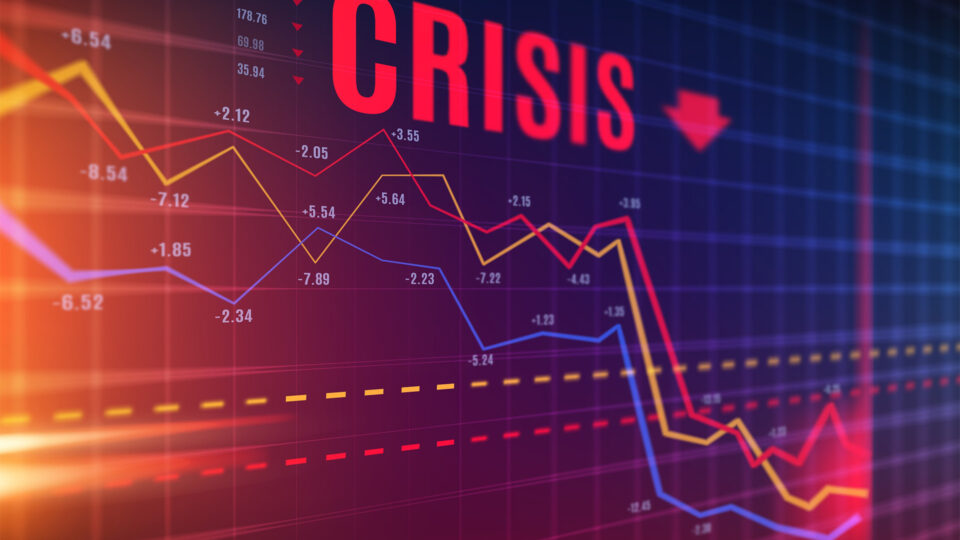The drastic increase in debt defaults show that rate hikes are starting to bite. The “free money” measures during COVID-19 seem to have delayed, not solved, the problem.
Corporate delinquencies on the rise
With pandemic loans and low interest rates now behind us, companies now find themselves straining beneath their accumulated debt burdens. “Default” means that a company has missed its interest or principal payments because of bankruptcy or a renegotiation of its debt obligations with creditors.
According to S&P Global data, the United States has experienced 69 corporate debt defaults so far this year — a 176% increase from the 25 tracked in 2022. Among the largest include:
- Yellow: The bankruptcy of the 99-year-old trucking company has led to 30,000 layoffs and supply chain disruptions.
- Western Global Airlines Inc.: After expanding their cargo fleet and betting that the pandemic-level demand would sustain, the company is in bankruptcy restructuring to repay vendors critical to their operations.
- CNG Holdings Inc.: Ironically, the payday lender defaulted on $228 million in bonds and is now in negotiations to swap them for new ones totaling $203 million, with a higher interest rate of 14.5%, and a maturity date set for 2026.
European corporations are also feeling the heat, with 19 corporate debt defaults so far this year (a 171% increase from last year).
Increase in credit card and auto defaults
Companies aren’t the only ones defaulting – we have also seen a stark increase in defaults on credit card debt and auto loans.
According to Moody’s Analytics, defaults on consumer loans have increased by 80% since their low in mid-2021. Auto loan defaults just hit the highest record since the aftermath of the Global Financial Crisis, and credit card delinquencies are experiencing a similar pattern.
It seems that the personal savings rate — which soared to $2.3 trillion during the pandemic — has been wiped clean by revenge spending (characterized by excessive spending after a period of financial restraint).
According to the New York Fed, the total household debt reached an all-time record of $17.06 trillion this year.
It is interesting to observe the difference between default rates during the Global Financial Crisis recession and the COVID-19 recession.
During the GFC, default rates skyrocketed. During COVID-19 recession, they actually plummeted. This is because of the various government measures designed to cushion the economic impact on citizens (rent moratoriums, stimulus checks, and all other forms of money printing). Economists will surely debate the effectiveness of these policies for decades, but it is now clear that the “free money” only delayed the problem rather than solving it.
Rising delinquency rates will introduce immense pressure on banks, which depend on earning back the money they have lent to consumers.
Why is this happening?
In the 40 years preceding the Fed’s most recent rate hiking cycle (which began in early 2022), interest rates consistently trended downward.
This made it easy for companies, governments, and individuals to take on debt, because they could always refinance at a cheaper rate in a few years.
From the early 1980s to today, US federal debt has grown from about $1 trillion to $32.3 trillion. Private debt has followed a similar exponential trajectory.
Now that we are in a period of rising rates, companies, governments, and individuals can no longer depend on their debt service getting cheaper over time (debt service refers to the ongoing repayment of interest and principal on a loan).
The old strategy of paying off old debts by borrowing more money no longer works. Hence, the significant rise in defaults.
It is important to realize that as delinquencies rise, creditors become more apprehensive about lending money. (No one wants to lend money they won’t earn back!) Consequently, they may tighten their lending criteria or demand much higher interest rates to compensate for the risk. Interest rates continue to rise, putting more pressure on borrowers, further increasing default risk, and so on.
The debt shell game
Few entities have accumulated debt as recklessly as federal governments. This year, concerns about US federal debt and government spending ignited a fierce debate within Congress. The stakes are high; if entire governments start defaulting on their debt obligations, the consequences would be far more devastating than a few consumer and corporate defaults.
Of course, instead of defaulting, governments usually just print the money to cover their obligations. They have the privilege of resorting to inflation, which punishes savers and sacrifices future generations on the altar of today’s consumption.
Debt is the bedrock of the entire fiat money system, which means investors have little choice but to play the game. However, owning tangible assets (those that do not draw their value from someone else’s debt) may offer some reprieve from the debt doom loop and help investors capitalize on the perpetual depreciation of fiat currency.
At Vaulted, we are excited to offer a chance at honest money – a way to safeguard your hard-earned wealth from the eroding effects of inflation and the risks associated with excessive debt.
Secure gold savings, without excess fees
Your weekly gold market commentary comes from our internal team of researchers and technical experts. Vaulted gives modern investors access to physical gold ownership at the best cost structure in the industry. With personal advising from industry experts and access to premier precious metals strategies, Vaulted is the key to life-long financial prosperity. Start protecting your portfolio today.
As always, thank you so much for reading – and happy investing!











